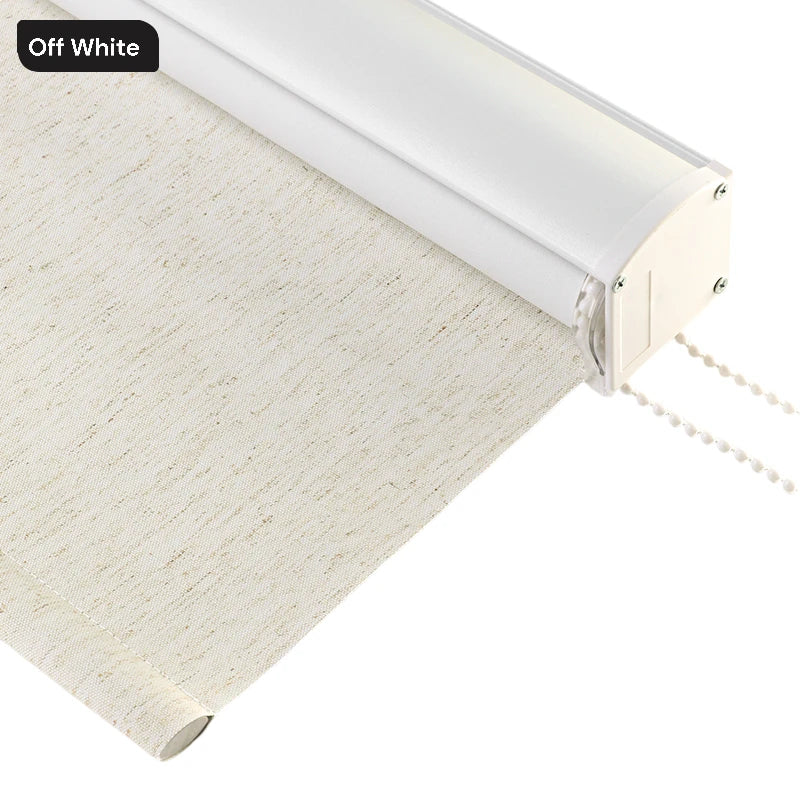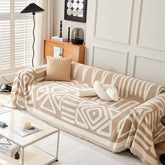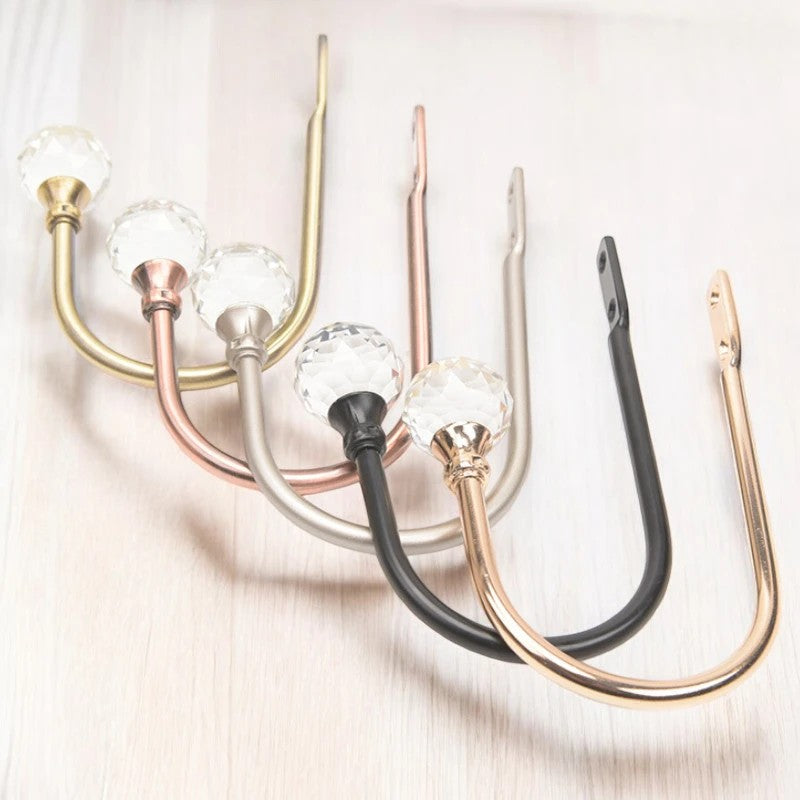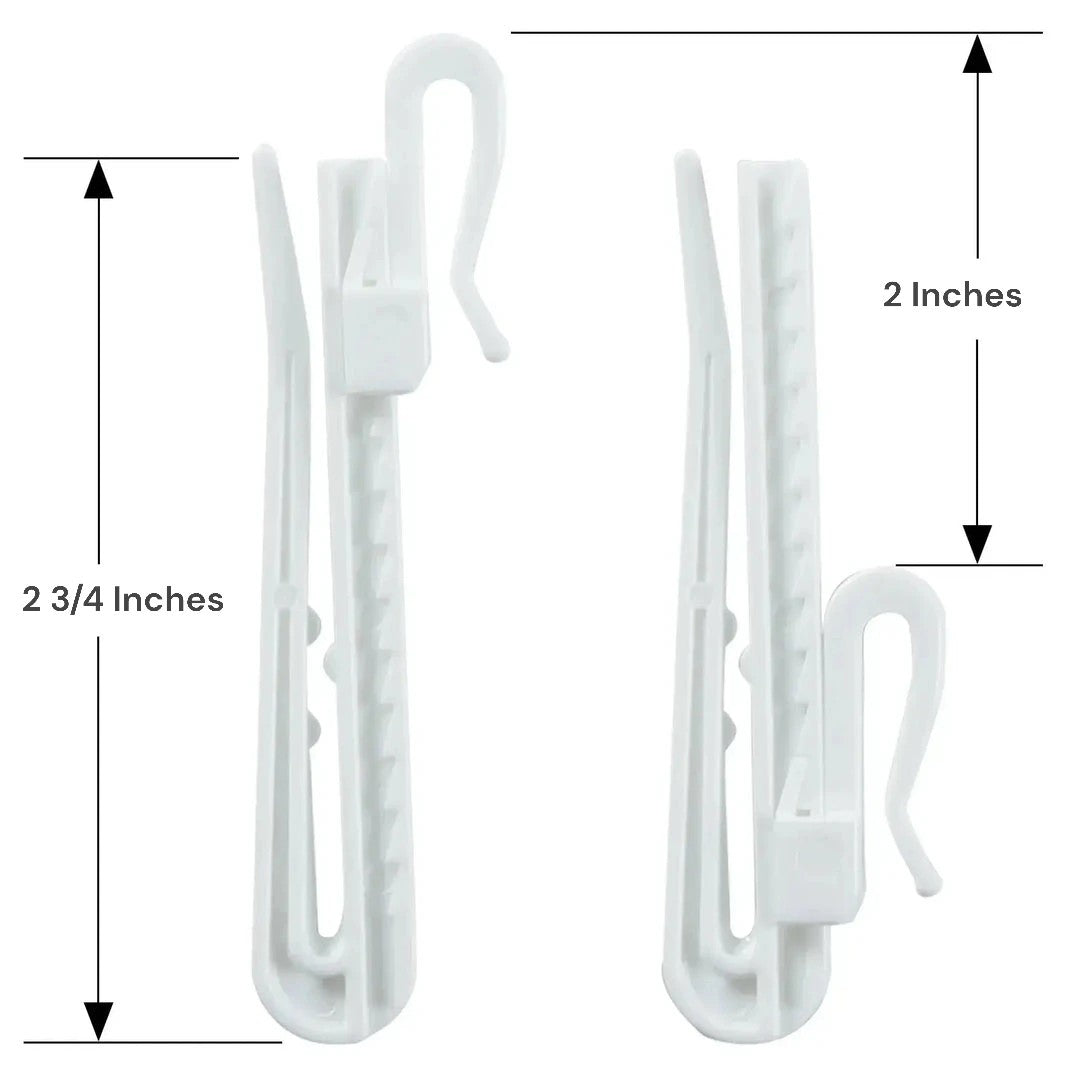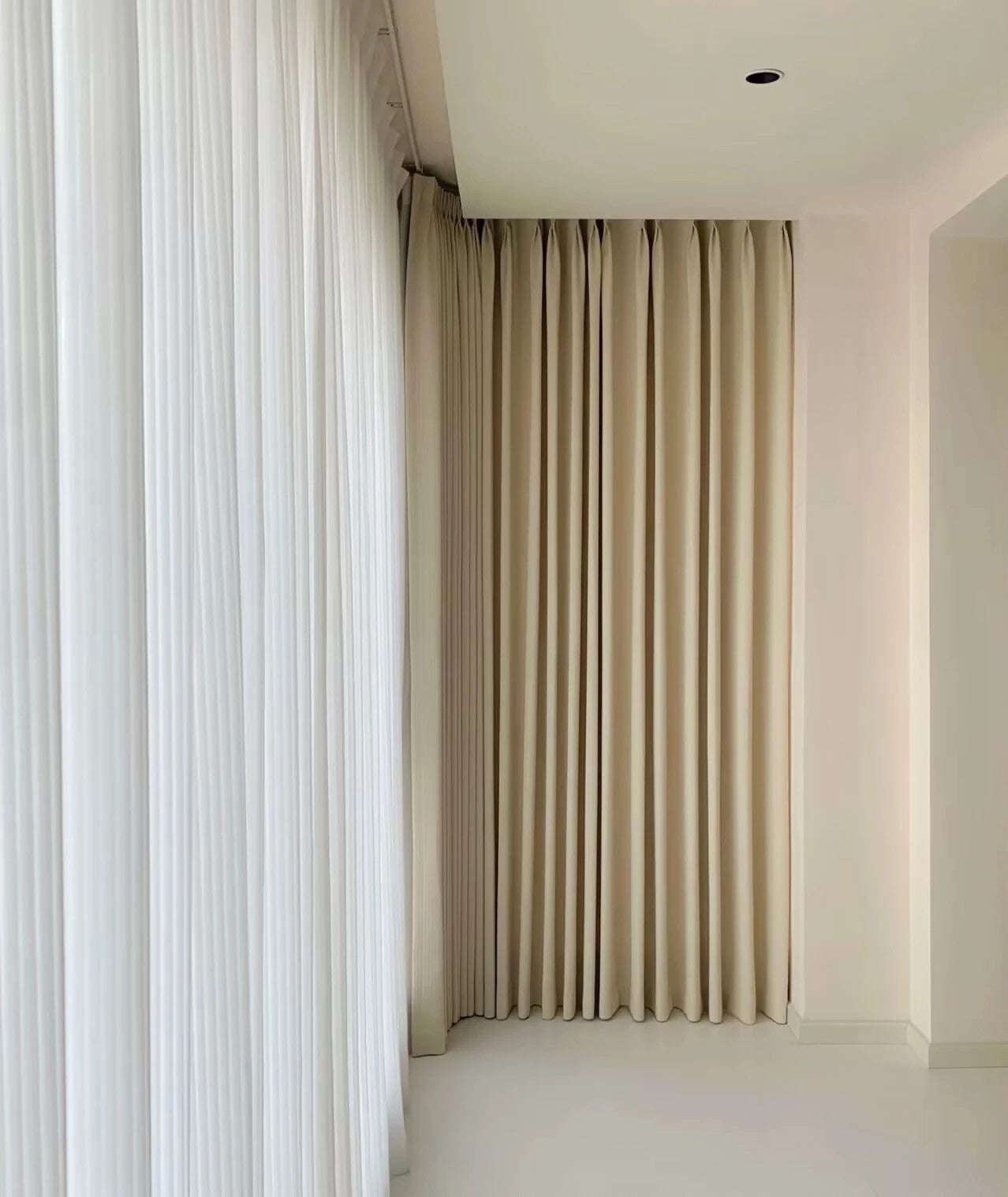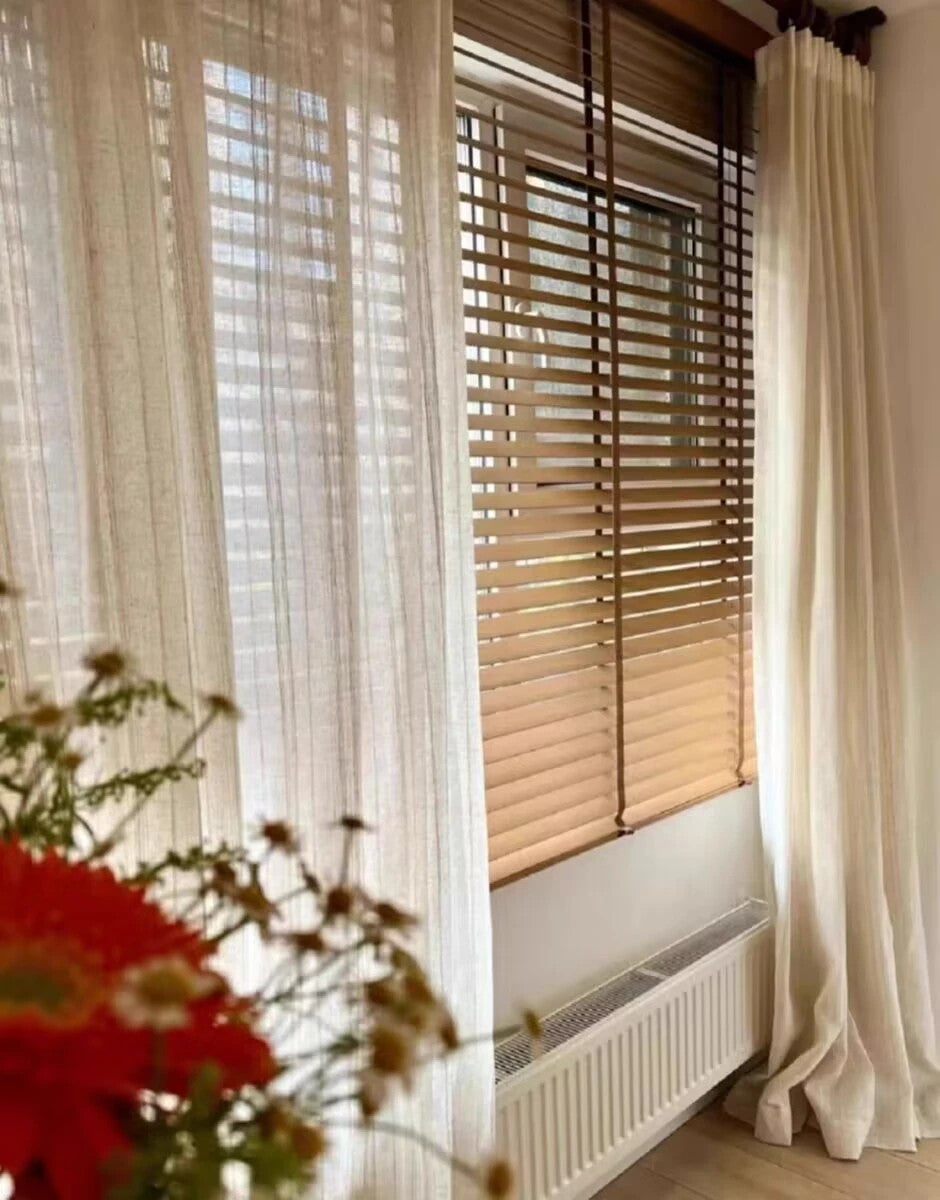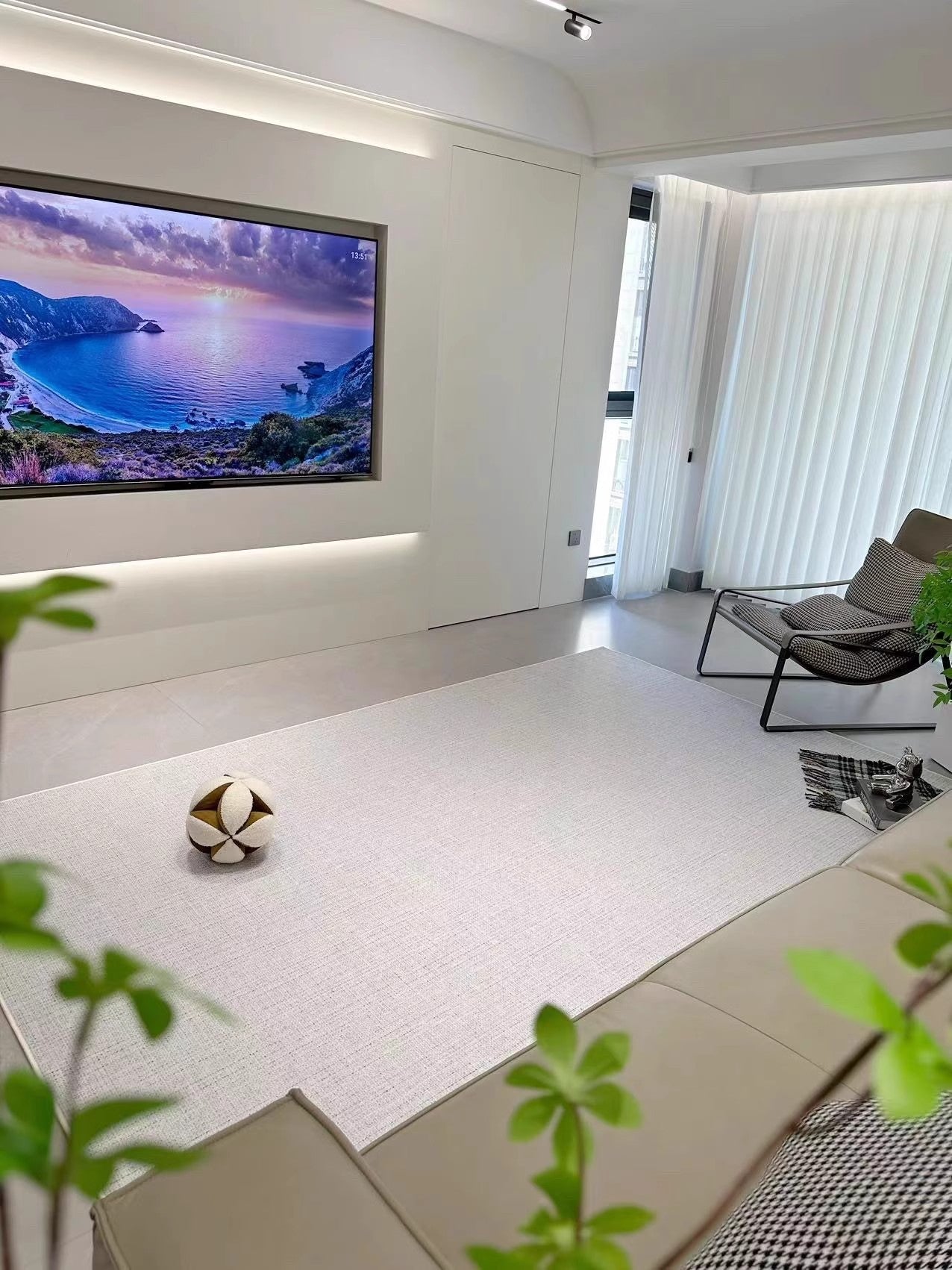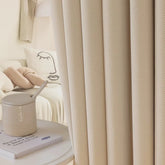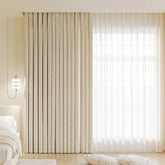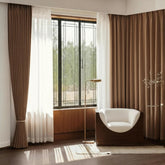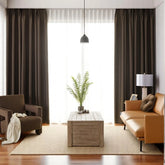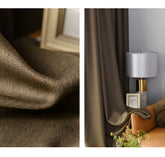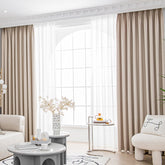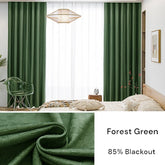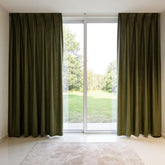When To Use Curtains Vs. Shades?
Curtains and shades are both popular window treatments that offer different advantages depending on your needs. Understanding the differences between curtains and shades can help you make an informed decision for your home. In this article, we will compare curtains and shades in terms of privacy, light control, aesthetics, and provide a comprehensive buying guide to help you choose the right option for your windows.
Key Takeaways:
- Curtains and shades offer different advantages for window treatments.
- Curtains add aesthetic appeal and can be customized to match your interior design.
- Shades are ideal for privacy and light control, with various styles to choose from.
- Consider space and practical factors when deciding between curtains and shades.
- Design considerations and specific themes can influence your choice.
- Use our comprehensive buying guide to find the perfect window treatment for your needs.
Curtains: Perfect for Adding Aesthetic Appeal
Curtains are a versatile window treatment option that can enhance the aesthetic appeal of any room. They come in a wide range of styles, fabrics, colors, and patterns, allowing you to customize the look of your windows to match your interior design. Curtains offer the benefits of adding softness, texture, and visual interest to your space. They can be used as a focal point or as a complementary element to your existing decor. Curtains also provide the opportunity for layering with other window treatments, such as sheers or valances, to create a unique and personalized look.
Whether you prefer long, flowing drapes or tailored panels, curtains offer endless possibilities when it comes to style. Popular curtain styles include:
- Grommet curtains: These curtains have metal rings at the top that slide onto a curtain rod, creating a sleek and modern look.
- Tab-top curtains: These curtains have fabric loops at the top that are threaded through a curtain rod, giving them a casual and relaxed appearance.
- Pleated curtains: These curtains have pleats at the top, adding an elegant and sophisticated touch to any room.
- Sheer curtains: These lightweight curtains allow natural light to filter through while still providing privacy.

"Curtains offer the benefits of adding softness, texture, and visual interest to your space."
When choosing between curtains and other window treatments, it's important to consider the benefits that curtains bring to your decor. Their versatility, customization options, and ability to create a layered look make them a popular choice for those looking to enhance the aesthetic appeal of their windows. Whether you're going for a bold, statement-making look or a subtle, timeless elegance, curtains can help you achieve the desired effect.
Shades: Ideal for Privacy and Light Control
Shades are a practical choice when it comes to ensuring privacy and controlling the amount of light entering a room. They are available in various styles, each offering its own benefits. Let's take a closer look at some of the advantages of shades:
- Privacy: Shades provide a high level of privacy, effectively blocking the view from outside. Whether you live on a busy street or simply value your privacy, shades can offer the seclusion you desire.
- Light Control: With shades, you have the flexibility to adjust the amount of natural light that enters your space. By simply raising or lowering the shades, you can easily control the brightness and create the desired ambiance.
- Clean and Streamlined Appearance: Shades offer a clean and streamlined look to your windows. They are perfect for modern and minimalist aesthetics, providing a sleek and uncluttered appearance.
When it comes to privacy and light control, shades are hard to beat. They offer a practical solution that allows you to customize the amount of light and privacy in your room. Whether you prefer roller shades, Roman shades, or cellular shades, there is a style that can perfectly fit your needs.

Shade Styles
| Shade Style | Benefits |
|---|---|
| Roller Shades | Easy to operate, sleek design, various fabric options |
| Roman Shades | Elegant appearance, soft and textured fabrics available |
| Cellular Shades | Energy-efficient, excellent insulation, light-filtering and blackout options |
Shades provide a clean and streamlined appearance to your windows, making them suitable for modern and minimalist aesthetics. They can be easily adjusted to allow natural light in or block it out completely, giving you control over your privacy and the amount of sunlight in your space.
When it comes to choosing between curtains and shades, privacy and light control are important factors to consider. Shades offer a practical solution that combines functionality with design. Their clean appearance, adjustable features, and variety of styles make them a popular choice for many homeowners.
Curtains vs Shades: Space Considerations
When deciding between curtains and shades, it's essential to consider the space available around your windows. The size and layout of your room, as well as the type of window you have, can impact which option is better suited for your needs.
For small spaces or windows located close to a wall or object, shades are often a more practical choice. They require less room to operate and can be easily adjusted to control light and provide privacy. This makes them ideal for compact apartments or rooms with limited space.
On the other hand, if you have ample space on either side of your window, curtains can be a great way to fill in the empty wall space and add visual depth to your room. Curtains are also a popular choice for large windows, as their fabric panels can create an elegant and dramatic look.
Curtains vs Shades for Narrow and High Windows
When it comes to narrow windows, both curtains and shades can be suitable options. However, it's important to consider the functionality and aesthetics you're looking to achieve.
For narrow windows, shades can provide a sleek and streamlined look that complements the window's shape. They can be mounted inside the window frame or directly on the glass, maximizing the available space.
If you prefer curtains for your narrow windows, consider using shorter panels that hang just below the window sill. This allows the curtains to frame the window without overwhelming the space.
As for high windows, shades are often a more practical choice. Their adjustable nature makes it easier to control light and privacy in hard-to-reach areas. However, if you're looking to make a bold design statement, floor-to-ceiling curtains can add a sense of grandeur and elegance to your space.
| Space Considerations | Curtains | Shades |
|---|---|---|
| Small spaces or windows close to walls/objects | Not ideal due to the need for space to operate | Require less room and can be easily adjusted |
| Ample space on either side of the window | Can fill in empty wall space and add visual depth | Provide a sleek and streamlined look |
| Narrow windows | Shorter panels can frame the window | Can be mounted inside the window frame |
| High windows | Add a sense of grandeur and elegance | More practical for light and privacy control |

Ultimately, the choice between curtains and shades should take into account the space considerations of your particular room and window. Consider the available space, functionality, and desired aesthetics to make the right decision. Both curtains and shades have their unique advantages, and selecting the appropriate option will depend on your specific needs and preferences.
Practical Considerations: Curtains or Shades?
When deciding between curtains and shades for your windows, it's important to consider practical factors that can impact your daily life. Let's explore some key considerations to help you make an informed decision:
Heat Control:
Both curtains and shades offer some degree of heat control for your space. However, curtains made with heavy fabrics, such as velvet or thermal-lined options, are especially effective in insulating your room and regulating temperature. These curtains can help keep your space cool in the summer and warm in the winter, reducing the need for excessive air conditioning or heating. Shades, on the other hand, particularly cellular shades with their insulating honeycomb design, are also known for their energy-efficient properties and can help block out heat during hot summer days.
Insulation:
In addition to heat control, curtains and shades can provide insulation benefits. Curtains, especially those made with thicker materials, can help reduce drafts and keep your home cozy during colder months. The additional layer of fabric acts as a barrier, preventing cold air from seeping in and warm air from escaping. Shades, though not as effective as curtains in terms of insulation, can still provide some degree of thermal insulation, particularly when installed as tight-fitting options that create a seal against the window frame.
"Curtains made with heavy fabrics can provide insulation and help regulate room temperature."
Noise Reduction:
If noise reduction is a priority for you, curtains are an excellent choice. The thick, dense fabrics of curtains absorb sound waves, helping to minimize external noise and create a quieter environment. This is particularly advantageous if you live in a noisy neighborhood or near a busy street. On the other hand, shades, especially cellular shades, can also provide some degree of noise reduction by trapping sound between the layers of the honeycomb structure, acting as a buffer against external noise intrusion.
Easy Maintenance:
When it comes to easy maintenance, shades typically have the advantage. Shades, especially those made with synthetic materials like vinyl or polyester, are relatively easy to clean and require minimal upkeep. Regular dusting or a gentle wipe-down with a damp cloth is usually sufficient to keep shades looking fresh. On the other hand, curtains, especially those with delicate fabrics or intricate designs, may require more care and attention. Curtains made of silk or velvet, for example, may need professional cleaning to maintain their appearance and texture.

| Considerations | Curtains | Shades |
|---|---|---|
| Heat Control | ✔️ Effective insulation with heavy fabrics | ✔️ Energy-efficient, especially cellular shades |
| Insulation | ✔️ Provides additional insulation against drafts | ✔️ Offers some degree of thermal insulation |
| Noise Reduction | ✔️ Absorbs sound waves for a quieter environment | ✔️ Provides some level of noise reduction |
| Easy Maintenance | 🔘 May require more care and professional cleaning | ✔️ Easy to clean with regular dusting or wipe-down |
Consider these practical factors when deciding between curtains and shades to ensure you choose the option that best suits your needs and lifestyle.
Design Considerations: Curtains vs Shades
When choosing between curtains and shades, it's important to consider the design aesthetic you want to achieve in your space. Curtains offer a wide range of design possibilities, allowing you to play with fabrics, colors, patterns, and styles to create a personalized look. They can serve as statement pieces or accent elements that complement your overall design theme. Curtains have the ability to add a touch of elegance, softness, and texture to your windows, enhancing the visual appeal of any room.
On the other hand, shades are known for their clean lines and minimalistic appearance, making them perfect for contemporary and modern design styles. They provide a sleek and unobtrusive look that blends seamlessly into your interior decor. Shades can create a sense of simplicity and sophistication in your space, allowing other design elements to take center stage. With their streamlined appearance, shades work well in spaces where a clean and clutter-free look is desired.
Whether you choose curtains or shades, both can be used as accent elements to enhance your overall design theme. Curtains can be paired with sheers or valances to create layers and add depth to your windows. Shades can be combined with curtains or drapes to provide additional privacy or light control when needed. By carefully selecting the right window treatment, you can achieve a cohesive and visually appealing design that reflects your personal style.

Table: Curtain vs Shade Design Considerations
| Curtains | Shades | |
|---|---|---|
| Design Possibilities | Wide range of fabrics, colors, patterns, and styles | Clean lines and minimalistic appearance |
| Personalization | Can serve as focal points or accent elements | Blends seamlessly into interior decor |
| Aesthetics | Adds softness and texture to windows | Creates a sleek and unobtrusive look |
| Layering Options | Can be combined with sheers or valances | Can be paired with curtains or drapes |
Ultimately, the choice between curtains and shades for design considerations depends on your personal preferences and the specific design theme you want to achieve in your space. Consider the style, ambiance, and overall aesthetic you want to create, and select the window treatment that best complements your vision.
Choosing the Right Window Treatment: A Buying Guide
When it comes to enhancing your windows, finding the perfect balance between style and functionality is key. In this buying guide, we will explore the different types of curtains and shades available, discuss their features and benefits, and provide some window treatment ideas to inspire you.
Curtains
Curtains are a classic window treatment option that can add a touch of elegance to any room. They come in various styles, including rod-pocket, grommet, and tab-top, allowing you to choose the one that best suits your aesthetic preferences. Curtains are available in a wide range of fabrics, patterns, and colors, giving you the freedom to create a personalized look.
When selecting curtains, consider the level of privacy and light control you desire. Sheer curtains can let in natural light while providing some privacy, while heavier drapes can block out light and ensure complete privacy. Additionally, curtains can help with insulation, keeping your space cooler in the summer and warmer in the winter.
Shades
If you prefer a more streamlined and minimalist look, shades may be the ideal choice for you. They are available in different styles, such as roller shades, Roman shades, and cellular shades. Shades offer excellent light control, allowing you to adjust the amount of sunlight that enters your space. They are also a great option for privacy, as they can be fully closed to block the view from the outside.
One of the advantages of shades is their energy efficiency. Cellular shades, in particular, have a unique honeycomb structure that traps air and provides insulation, helping to reduce energy consumption and lower utility bills. Shades are also easy to maintain, as they can be simply wiped clean with a damp cloth.
Window Treatment Ideas
No matter which option you choose, there are endless possibilities for creating beautiful and functional window treatments. Consider layering curtains and shades for added depth and versatility. Use curtains as an accent color to complement your existing decor, or opt for shades in neutral tones for a more understated look. Don't be afraid to mix and match different styles and textures to create a unique and personalized window treatment.
Remember, when choosing between curtains and shades, it's essential to consider your specific needs, such as privacy, light control, and insulation. Take into account the aesthetics of your space and the overall design theme you want to achieve. By considering these factors and exploring different options, you can find the perfect window treatment that combines both style and functionality.

Conclusion
After exploring the differences between curtains and shades, it's clear that there is no definitive answer to the question of which is better. Both options offer unique advantages that should be considered based on your specific needs and preferences.
Curtains are a great choice if you're looking to add aesthetic appeal to your space. With a wide range of styles, fabrics, and customization options, curtains can enhance the overall look and feel of any room. They also provide the opportunity to create a layered look by pairing them with other window treatments.
On the other hand, shades excel in privacy and light control. They offer a clean and streamlined appearance, making them ideal for modern and minimalist aesthetics. Shades also provide practical benefits such as energy efficiency and ease of maintenance.
In the end, the decision between curtains and shades comes down to personal preferences, the specific needs of your space, and the desired design aesthetic. Consider the factors discussed in this article and weigh the pros and cons to make an informed decision that suits your style and functional requirements. Whether you choose curtains, shades, or a combination of both, the right window treatment can transform your space and enhance its functionality.
FAQ
When should I use curtains vs. shades?
The choice between curtains and shades depends on your specific needs and preferences. Curtains are great for adding aesthetic appeal and customization options, while shades excel in privacy and light control. Consider the factors discussed in the article to make an informed decision.
What are the benefits of curtains?
Curtains offer versatility, with a wide range of styles, fabrics, colors, and patterns to choose from. They can enhance the aesthetic appeal of any room, add softness and texture, and be layered with other window treatments for a unique look.
What are the benefits of shades?
Shades are ideal for privacy and light control. They come in various styles and can be easily adjusted to allow natural light in or block it out completely. Shades also provide a clean and streamlined appearance, making them suitable for modern design styles.
What should I consider in terms of space when choosing between curtains and shades?
The amount of space available around your windows can influence the choice between curtains and shades. If you have limited space or the window is close to a wall or object, shades are a better option. If you have ample space, curtains can be used to fill in empty wall space and create visual impact.
What practical factors should I consider when choosing curtains or shades?
Consider factors such as heat control, insulation, noise reduction, and maintenance. Curtains made with heavy fabrics provide insulation and sound absorption. Shades, especially cellular shades, are energy-efficient and easier to clean and maintain.
How do curtains and shades differ in terms of design considerations?
Curtains offer more design possibilities with their wide range of fabrics, colors, patterns, and styles. They can be used as statement pieces or as accent elements. Shades have a clean and minimalistic appearance, making them well-suited for contemporary and modern design styles.
What is the conclusion when it comes to curtains vs. shades?
There is no one-size-fits-all answer. Both options have their own advantages and considerations. Curtains offer aesthetic appeal and customization, while shades excel in privacy and light control. Ultimately, the choice depends on your personal preferences and the specific needs of your space.



